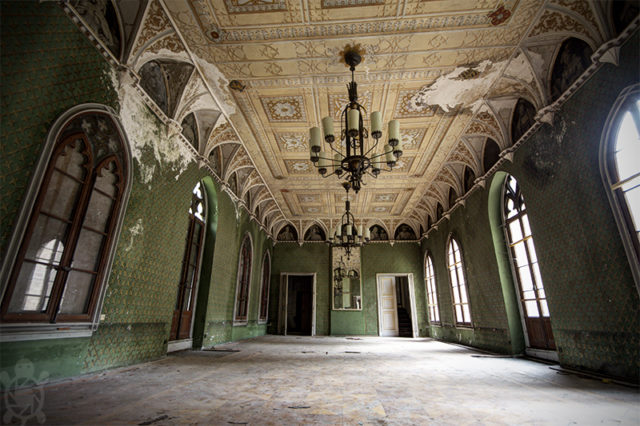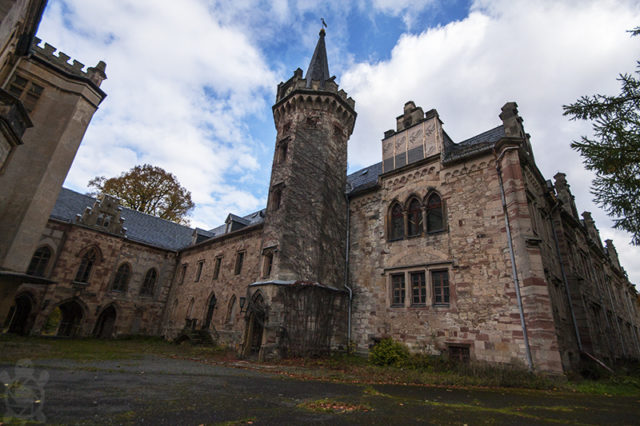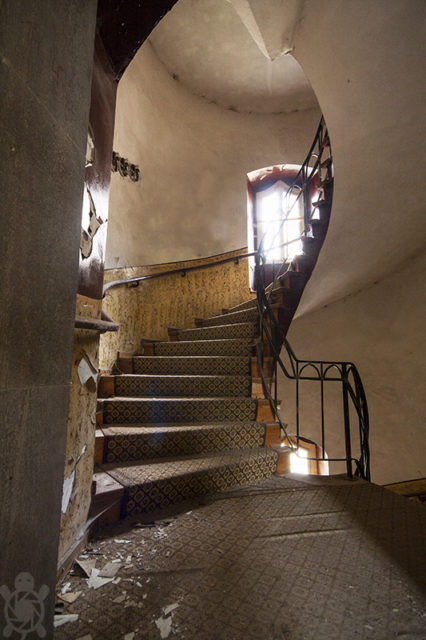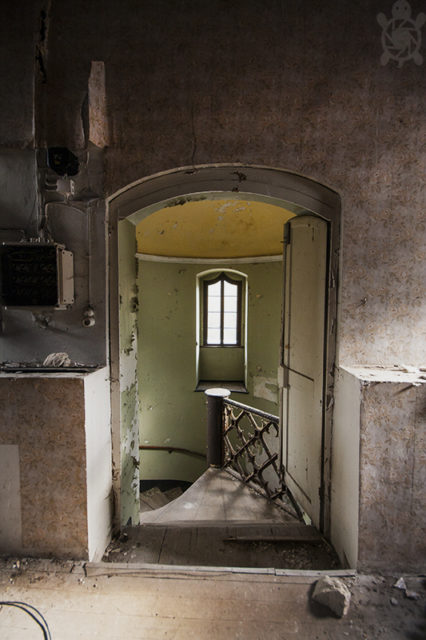Schloss Reinhardsbrunn, often referred to as Rapunzel Castle, stands as a striking neo-Gothic architectural gem nestled along the Reinhardtsbrunn in the town of Friedrichroda, within the scenic State of Thuringia, Germany. This enchanting structure finds its roots on the hallowed ground that was once occupied by the historic Reinhardsbrunn Abbey.
The abbey’s origins trace back to the year 1085 when it was established by Louis Springer, a Thuringian Landgrave, amid the tumultuous era of the Investigative Struggle, during which the church and the state vied for authority in the appointment of bishops. Initially, Reinhardsbrunn Abbey sheltered a Benedictine order of monks from Hirsau Abbey and enjoyed papal protection from 1093 onwards. It is documented that this site not only served as a secluded monastery but also as the final resting place for the Ludovingian landowners. However, the abbey’s significance dwindled after the fall of the Ludowinger dynasty in 1247, though it continued to serve as a burial site for the Wettin dynasty, which succeeded the Ludovingians.

The tumultuous events of the German Peasant War in 1525 brought devastation to the monastery as it was ransacked and left in ruins, prompting the fleeing of all its monks and its subsequent secularization. Over the ensuing decades, the abandoned structures succumbed to decay. By the 16th century, Reinhardsbrunn was incorporated into the Ernestine duchy of Saxe-Weimar, where in 1572, Duke Friedrich Wilhelm I initiated the transformation of the former abbey into a local seat of administration. The primary portion of the castle was meticulously restored under the command of Duke Frederick II of Saxe-Gotha-Altenburg around 1706. From 1827 onward, it found a new purpose as a hunting retreat. The present-day ruins represent the Neo-Gothic castle constructed during the mid-19th century by Duke Ernest I of Saxe-Coburg and Gotha, in collaboration with architect Gustav Eberhard. This transformation turned the former abbey into a castle, designed as an English-style summer residence.

Notably, the Neo-Gothic design incorporated a striking bell tower with a soaring spire, a feature that contributed to Schloss Reinhardsbrunn being affectionately known as “Castle Rapunzel.” In 1850, the castle was complemented by the addition of a landscaped park. Duke Ernest I, the father of Prince Albert, who would later become the husband of Queen Victoria of Britain, spent numerous summers at Schloss Reinhardsbrunn during his childhood. The Royal Collection Trust preserves a series of photographs that Queen Victoria commissioned in 1858 for her husband, reflecting his deep affection for this place.
The castle endured various tribulations during and after World War II, as it was taken over by the East German state and used as a military hospital by Soviet Red Army troops for a time. After the hospital’s closure, the state repurposed Schloss Reinhardsbrunn for diverse functions. In 1953, it became a site for police and firefighter training when the castle and its grounds were transferred to the State of Thuringia. In 1961, the authorities took the remarkable step of converting the castle into a hotel.

Following Germany’s reunification, the castle changed hands multiple times, with several proposals to convert it into a luxurious 5-star hotel, although none came to fruition. By 1991, Schloss Reinhardsbrunn had fallen into severe disrepair, prompting its listing as a historic monument by the State of Thuringia in 1992. Remarkably, the building had already earned recognition as a landmark of the duchy in 1891 and as a site of national importance to East Germany in 1980.
In 2006, a modest construction company, BOB Consult GmbH, acquired the castle for a mere $29,000. Two years later, Rusintek, a Russian investment consortium, purchased the company for $14 million, effectively transferring ownership of Schloss Reinhardsbrunn. These investors expressed grand plans for a lavish hotel on the premises. However, the State of Thuringia harbored suspicions that the Russian company’s acquisition of BOB Consult was a front for money laundering, a notion seemingly supported by the Russian commercial register, which showed no revenue for the company in 2008.

As the situation lingered and the castle languished in disrepair, the government took an audacious step by issuing a decree to protect historical monuments. The investment company was given an ultimatum: renovate the property or offer it for sale. In response, the investment company proposed selling Schloss Reinhardsbrunn to the State of Thuringia for a token sum of one euro. In July 2018, the state officially regained possession of the castle, immediately undertaking necessary repairs.
Nevertheless, addressing the long-term needs of Schloss Reinhardsbrunn was a formidable challenge. The state allocated approximately 1.9 million euros for restoration, although estimates suggest that approximately 40 million euros are required to fully restore the castle to its former glory. These captivating photographs of the castle were taken by Benjamin Seyfang, a talented artist who excels in both photography and street art. Street art served as Benjamin’s initial passion before photography, allowing him to discover the allure of decay and the stories it tells.
See More Photos: GALLERY(click here)
